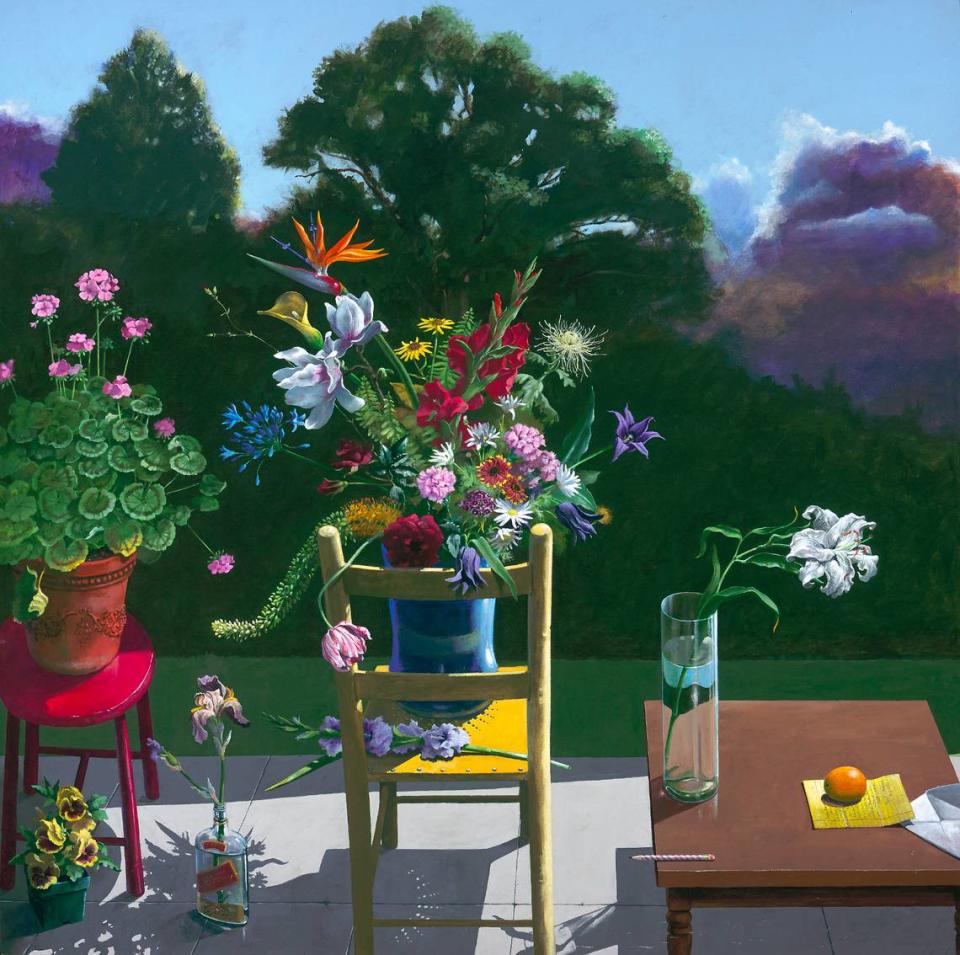A Crocker Art Museum exhibit shows how LGBTQ life is celebrated only as relics | Opinion
The eroticism in the drawings greets you first — the bold colors come second. There is no shortage of skin here.
An exhibit at Sacramento’s Crocker Art Museum aims to do exactly what its title suggests: “Breaking the Rules.” Starring the late gay artists Paul Wonner and William Thilophilus Brown, the exhibit is a celebration of gender morphism and the human body that can only be described as ahead of its time. (The exhibit is scheduled to close its four-month run on Aug. 27.)
Among the subjects portrayed here are male nudes — some affirming and others challenging the traditional strictures of masculinity.
Opinion
In the triptych “Seven Views of the Model with Flowers,” the men hold delicate bouquets, appearing to be in melancholic thought. Just a few feet away, “The Referee,” rich with Cubist influences, shows athletes engaging in vigorous combat. My personal favorite, “Standing Bathers,” brings a youthful wistfulness, featuring adult men about to skinny dip.
Museums like the Crocker are becoming a valuable, financially accessible haven for queer representation as classrooms around the country have come under fire amid anti-LGBTQ+ legislation.
As of May 2023, over 520 anti-LGBTQ+ bills have been introduced in state legislatures, and a record-shattering 70 were made into laws: banning gender affirming care for transgender youth, restricting drag performances and censoring books.
Most recently, in the Golden State, at Southern California’s Chino Valley Unified School District, the school board passed a measure to notify parents if their child tells a teacher or notes on a form that they want to be referred to by a name or pronoun different than the one listed on their birth certificate. This means that children who are not yet ready to come out to potentially unaccepting parents will be forced to do so if they choose to outwardly embrace their gender identity at school.
In the realm of pronoun usage, proponents of anti-LGBTQ laws claim that it isn’t gayness or transgenderism they explicitly disapprove of. Rather, they say that sex and nudity have no place in education, and that queer literature has been exploited to indoctrinate young children who have not yet developed a concept of gender fluidity yet.
Museums, however, which are arguably just as public and educationally-oriented, have largely been spared even as public education remains a battle ground of LGBTQ rights. Families with young children frequent New York City’s Metropolitan Museum of Art’s Greco-Roman or Egyptian sections, where statues with exposed genitalia and pottery depicting sex scenes are on broad display. In New York City, the MoMa and American Museum of Natural History form a quintessential staple of the elementary and middle school field trip experience.
Descriptions of prostitution and domestic violence underneath drawings go relatively unnoticed compared to “All Boys Aren’t Blue,” a non-fiction book for young adults by George M. Johnson, banned in 29 school districts. Even coursework like Advanced Placement Psychology are victims, with the College Board saying that it was “effectively banned” in Florida after Gov. Ron DeSantis instructed “superintendents that teaching foundational content on sexual orientation and gender identity is illegal under state law.”
There is also the classic example of children films, which have notoriously struggled to produce queer protagonists — and are discouraged, perhaps now more than ever, to do so.
It is very clearly not art that offends, but rather the non-traditional romance, the newness of queerness to some straight people — the very real and present love stories — that make them uncomfortable. This is a problem, because this is not a question about education anymore, it’s a question about acceptance, which pervades every aspect of how a human being is treated by others.
There is a misunderstanding of how important sexuality, and its liberation, are to individuals who cannot easily identify with a heteronormative love story, whether that story involves other partners or just themselves. In a popular episode on his show, English broadcaster and journalist Piers Morgan justified his refusal to call others by their non-traditional pronouns by rhetorically asking: “Why can’t I identify as a Black lesbian?”
What he, and other like-minded critics have discounted, are the lived experiences of people who have spent decades or even lifetimes grappling through gender self-discovery and feeling a strong, emotional connection to a different gender. Critics are picking and choosing the parts of the LGBTQ+ movement they believe are relevant, just like how museums are deemed a more appropriate form of sex education than the classroom — when all along, there are undertones of resentment against trans and gay people from those who say so.
We seem to only be comfortable appreciating the expression of sexuality as relics, as pieces of history behind glass protectors or propped up in the center of the Crocker Art Museum. We find it so much easier to appreciate through the lens of critique and contemplation about a work’s meaning than through direct respect toward a living, breathing person.
While any form of representation is important for a marginalized community, in this case with museums delivering a counter narrative to school legislation that aims to erase LGBTQ history, it is worthwhile to note that sexuality, its oppression, and LGBTQ people are not just history that belongs in museums. As artistic spaces continue to serve as a powerful means of “breaking the rules,” politicians now have the task of making sure that that extends to classrooms and all other components of a growing person’s education.
Queer people are here, they are present, and they will continue to exist, changing the world in the most beautiful, evocative ways.


